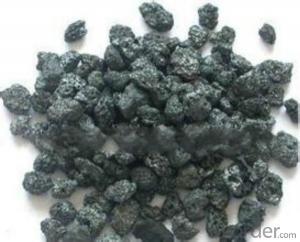FC 98.5% Calciend Petroleum Coke Manufactured in China
- Loading Port:
- Tianjin
- Payment Terms:
- TT OR LC
- Min Order Qty:
- 20.2
- Supply Capability:
- 2020 m.t./month
OKorder Service Pledge
OKorder Financial Service
You Might Also Like
Brief introduction
Calcined Petroleum Coke comes from delayed coke which extracted from oil refinery. Although It contains a little bit higher level of sulfur and nitrogen than pitch coke, the price advantage still makes it widely used during steel-making and founding as a kind of carbon additive/carburant.
BaoSteel is world famous organization. It is well-known in the world. This calcined petroleum coke's raw material is from Bao Steel, which has great quality guarantee. Bao Steel also named this coke as Pitch Coke.
Features
Our product has follwing advantages:
The morphology, chemistry and crystallinity of recarburisers
have a major impact on the overall casting cost. The combined
application and cost benefits, which are derived through the
use of Desulco, enable foundries to manufacture castings in a
highly cost effective manner.
reduces
Recarburiser consumption
Power consumption
Inoculant consumption
MgFeSi consumption
Furnace refractory wear
Scrap rate
Tap to tap time
Slag inclusions risk
Chill
increases
Casting microstructure
Productivity
Process consistency
Specifications
Products | CPC | ||
F.C.% | 98.5MIN | 98.5MIN | 98MIN |
ASH % | 0.8MAX | 0.8MAX | 1MAX |
V.M.% | 0.7 MAX | 0.7 MAX | 1 MAX |
SULFUR % | 0. 5MAX | 0. 7MAX | 1MAX |
MOISTURE % | 0.5MAX | 0.5MAX | 1MAX |
Pictures
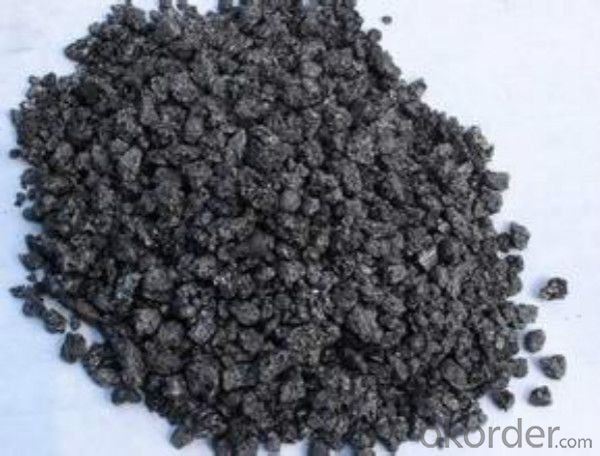
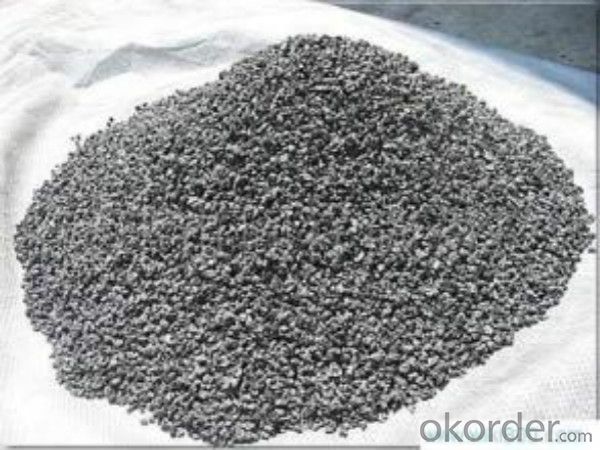
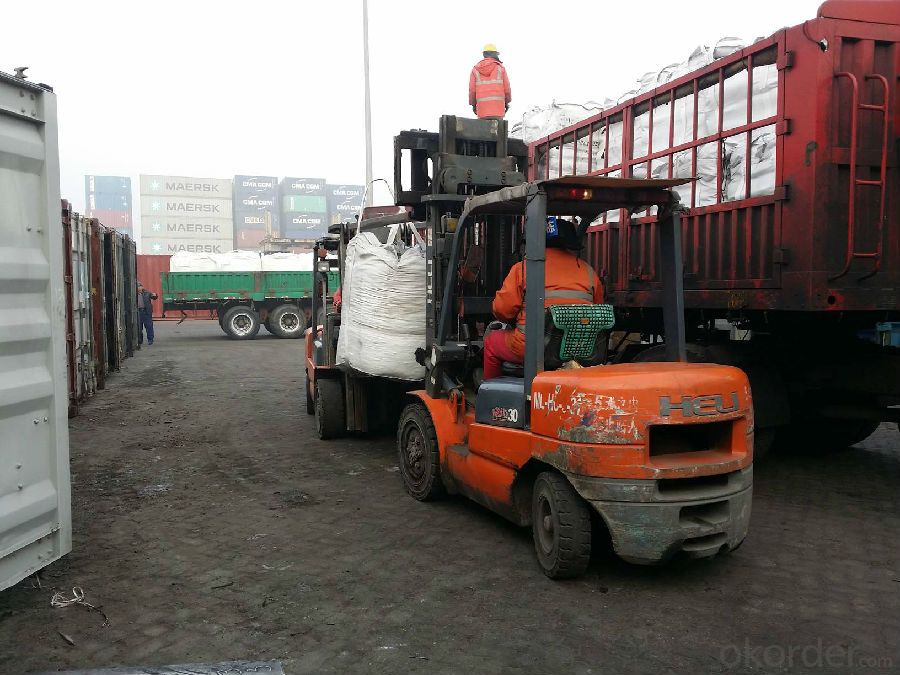
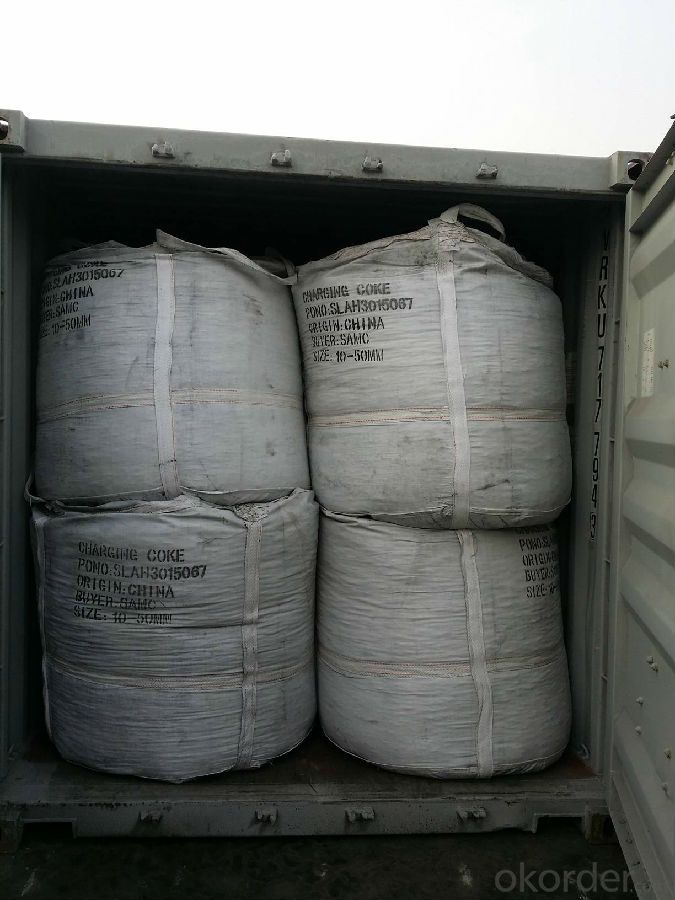
FAQ
1 What is the package?
In jumbo bag with/without pallet
2 What is the delivery time?
25 days after receiving the workable LC or down payment
3 What is the payment term?
T/T, L/C,D/P,D/A
- Q:There is a graphite mine, looking for three experts engaged in mineral processing industry asked. They say earthy graphite, and the answer to the taste is quite different. Some say that the fixed carbon content of 15, and some say graphite grade 90%. The same sample. Some people say that very valuable, and some say that the grade is too low, worthless. I'm all confused. What do you mean by graphite grade and fixed carbon?
- No, fixed carbon is the index of industrial analysis in coal, which is used to calculate calorific value. Graphite grade refers to the content of graphite in graphite ore.
- Q:How to distinguish carbon rods to identify carbon fishing rods?
- I'm also waiting to learn! It seems all very busy, the masters are not on-line
- Q:How is activated carbon produced?
- Activated carbon is created by a process known as activation, which involves heating carbon-rich materials (such as wood, coal, or coconut shells) at high temperatures without oxygen. Activation can be done in two main ways: physically or chemically. In physical activation, the carbon-rich material is first carbonized by heating it to a high temperature. This creates a char with a high carbon content. Then, an oxidizing gas (like steam or carbon dioxide) is used to treat the char at temperatures ranging from 600 to 900 degrees Celsius. This causes the char to expand and develop a porous structure. The resulting material is washed and dried to eliminate any impurities, resulting in activated carbon. On the other hand, chemical activation involves saturating the carbon-rich material with a chemical activating agent (such as phosphoric acid, zinc chloride, or potassium hydroxide). The impregnated material is then heated to temperatures between 400 and 800 degrees Celsius. This process chemically reacts with the carbon, forming a porous structure. The activated carbon is washed and dried to remove any remaining chemicals. Both physical and chemical activation methods yield activated carbon with a large surface area and a network of pores. These pores enhance the adsorption capacity of the activated carbon, enabling it to effectively capture and eliminate impurities, contaminants, and pollutants from gases and liquids.
- Q:What is carbon dating and how does it work?
- The age of organic materials, like wood, cloth, and bone, can be determined using carbon dating, a scientific method. This method measures the quantity of carbon-14 (C-14) present in the sample. It is based on the principle that all living organisms contain a small amount of radioactive carbon-14, which is created in the upper atmosphere when nitrogen atoms are hit by cosmic rays. Over time, this radioactive form of carbon decays and transforms into nitrogen-14. To begin the process of carbon dating, a sample is collected from the object of interest. Typically, this sample consists of organic matter that was once part of a living organism. The sample is then treated to remove any impurities and made ready for analysis. Scientists measure the ratio of C-14 to stable carbon-12 (C-12) in the sample to determine its age. This measurement is carried out using an accelerator mass spectrometer (AMS), an instrument with high sensitivity that can detect and measure extremely low levels of C-14. By comparing the ratio of C-14 to C-12 in the sample with the known ratio in the atmosphere at the time the organism died, scientists can calculate the time that has passed since the organism's death. The half-life of C-14, which is the time it takes for half of the radioactive isotope to decay, is approximately 5,730 years. This means that after 5,730 years, half of the C-14 in a sample will have transformed into nitrogen-14. By measuring the remaining amount of C-14 in a sample and knowing its half-life, scientists can estimate its age. Carbon dating is an invaluable tool for archaeologists, paleontologists, and geologists as it enables them to accurately determine the age of ancient artifacts, fossils, and geological formations. However, it is important to note that carbon dating is effective only for materials up to around 50,000 years old since beyond this point, the remaining amount of C-14 becomes too small to measure accurately.
- Q:What are the consequences of increased carbon emissions on human migration patterns?
- Increased carbon emissions can have significant consequences on human migration patterns. One major consequence is the displacement of populations due to the impacts of climate change, such as rising sea levels, extreme weather events, and loss of agricultural productivity. This can lead to forced migration, as people seek safer and more habitable areas. Additionally, the impacts of climate change can exacerbate existing social, economic, and political tensions, potentially leading to conflict and further displacement. Furthermore, the strain on resources and infrastructure caused by increased carbon emissions can also contribute to migration, as communities may struggle to meet basic needs. Overall, increased carbon emissions can disrupt human migration patterns and create complex challenges for individuals, communities, and governments worldwide.
- Q:How does carbon impact the prevalence of wildfires?
- There are several ways in which carbon affects the occurrence of wildfires. First and foremost, carbon dioxide (CO2) is a greenhouse gas that contributes to climate change. As the concentration of CO2 increases in the atmosphere, temperatures rise, resulting in drier conditions in many areas. These dry conditions create a more favorable environment for the ignition and spread of wildfires. Moreover, carbon plays a significant role in the amount of fuel available to feed wildfires. Carbon-based materials, such as dead vegetation, trees, and other organic matter, serve as the main source of fuel for fires. As carbon accumulates in ecosystems, either naturally or through activities like deforestation, the potential fuel for wildfires increases. This increased fuel load can lead to more frequent and intense fires. In addition, carbon has an impact on the health and vitality of forests. Higher levels of atmospheric CO2 can enhance plant growth, resulting in denser vegetation. Although this may seem beneficial, it actually contributes to the intensity and severity of wildfires. Denser vegetation means there is a greater amount of fuel available, especially when combined with the dry conditions caused by climate change. This combination becomes a recipe for more destructive fires. Lastly, the combustion of carbon-based materials during wildfires releases large amounts of carbon dioxide into the atmosphere. This creates a positive feedback loop, as the increased carbon emissions contribute to further climate change, which, in turn, worsens the conditions for wildfires. In summary, carbon plays a critical role in determining the occurrence and severity of wildfires through its impact on climate change, fuel load, forest health, and the release of greenhouse gases during combustion. It is essential to address carbon emissions and implement effective forest management practices in order to mitigate the risks and consequences associated with wildfires.
- Q:What are the impacts of carbon emissions on natural disasters?
- Carbon emissions have a significant impact on natural disasters, exacerbating their intensity and frequency. One of the most prominent effects of carbon emissions is the contribution to global warming and climate change. As carbon dioxide and other greenhouse gases accumulate in the atmosphere, they trap heat and cause the Earth's temperature to rise. This rising temperature leads to various changes in weather patterns, which in turn increase the likelihood and severity of natural disasters. One of the most obvious impacts of carbon emissions on natural disasters is the intensification of hurricanes and tropical storms. Warmer ocean temperatures provide more energy for these storms, making them stronger and more destructive. Additionally, increased evaporation due to higher temperatures leads to heavier rainfall during storms, increasing the risk of flooding and landslides. Carbon emissions also contribute to the melting of glaciers and polar ice caps, leading to rising sea levels. This rise in sea levels increases the vulnerability of coastal areas to storm surges and flooding during hurricanes and typhoons. Low-lying regions and island nations are particularly at risk, as they face the possibility of losing their land to rising waters. Furthermore, carbon emissions play a role in the occurrence and severity of wildfires. As temperatures rise, vegetation becomes drier, creating ideal conditions for wildfires to ignite and spread quickly. These wildfires can devastate vast areas of land, destroying ecosystems, homes, and livelihoods. Another impact of carbon emissions on natural disasters is the disruption of weather patterns. Climate change is altering rainfall patterns, leading to longer and more severe droughts in some regions, while others experience more frequent and intense rainfall events. These changes in precipitation patterns can result in prolonged droughts, water scarcity, and increased risk of wildfires in some areas, while others face increased flooding and landslides. In conclusion, carbon emissions have a profound impact on natural disasters. They contribute to global warming and climate change, intensifying hurricanes, increasing the risk of flooding, raising sea levels, fueling wildfires, and disrupting weather patterns. It is crucial to reduce carbon emissions and transition to clean and sustainable energy sources to mitigate these impacts and protect our planet from the devastating effects of natural disasters.
- Q:How do forests act as carbon sinks?
- Forests act as carbon sinks by absorbing carbon dioxide from the atmosphere through the process of photosynthesis. Trees and other plants take in carbon dioxide and convert it into oxygen, while storing the carbon in their trunks, branches, and roots. This stored carbon remains in the forest ecosystem, reducing the amount of greenhouse gases in the atmosphere and helping to mitigate climate change.
- Q:How does carbon affect ocean acidification?
- Various human activities, such as burning fossil fuels and deforestation, release carbon dioxide (CO2) into the atmosphere. This CO2 is a greenhouse gas that, when absorbed by the oceans, leads to a process called ocean acidification. When CO2 dissolves in seawater, it reacts with water molecules and forms carbonic acid. This reaction increases the concentration of hydrogen ions (H+), resulting in a decrease in pH levels and making the seawater more acidic. This decrease in pH is a key characteristic of ocean acidification. As the ocean becomes more acidic, it disrupts the delicate chemical balance that many marine organisms rely on for survival and growth. Organisms like corals, shellfish, and phytoplankton use calcium carbonate to build their shells or skeletons, but increased acidity hampers their ability to do so. Ocean acidification also impacts the growth and development of marine plants and animals. For instance, changes in pH levels can affect the ability of larvae from certain marine species to form strong shells or skeletons. Additionally, acidified waters can disrupt the metabolism and reproductive processes of many marine organisms. The consequences of ocean acidification extend beyond individual organisms. Entire ecosystems, such as coral reefs, face threats due to increasing acidity. Coral reefs provide habitat for numerous species and are vital to marine biodiversity. However, the more acidic conditions make it challenging for corals to build and maintain their calcium carbonate structures, resulting in coral bleaching and degradation of reef systems. Moreover, ocean acidification can have cascading effects on other marine organisms and food webs. For example, changes in the growth and survival rates of phytoplankton, a primary food source for many marine species, can disrupt the entire food chain, impacting fish populations and ultimately affecting human communities that rely on seafood for sustenance and livelihoods. In conclusion, the rise in carbon dioxide emissions contributes to ocean acidification, which alters the chemistry of the oceans and poses significant threats to marine life and ecosystems. Understanding and addressing the causes and impacts of ocean acidification are essential for the long-term health and sustainability of our oceans.
- Q:What are some natural sources of atmospheric carbon emissions?
- Some natural sources of atmospheric carbon emissions include volcanic eruptions, forest fires, and decomposition of organic matter. Volcanic eruptions release large amounts of carbon dioxide and other greenhouse gases into the atmosphere. Forest fires also release carbon dioxide when trees and vegetation burn. Additionally, the decomposition of organic matter such as dead plants and animals in forests, wetlands, and oceans produces carbon dioxide as a natural byproduct. These natural sources of atmospheric carbon emissions have been occurring for millions of years and play a crucial role in the carbon cycle, which helps regulate Earth's climate.
1. Manufacturer Overview |
|
|---|---|
| Location | |
| Year Established | |
| Annual Output Value | |
| Main Markets | |
| Company Certifications | |
2. Manufacturer Certificates |
|
|---|---|
| a) Certification Name | |
| Range | |
| Reference | |
| Validity Period | |
3. Manufacturer Capability |
|
|---|---|
| a)Trade Capacity | |
| Nearest Port | |
| Export Percentage | |
| No.of Employees in Trade Department | |
| Language Spoken: | |
| b)Factory Information | |
| Factory Size: | |
| No. of Production Lines | |
| Contract Manufacturing | |
| Product Price Range | |
Send your message to us
FC 98.5% Calciend Petroleum Coke Manufactured in China
- Loading Port:
- Tianjin
- Payment Terms:
- TT OR LC
- Min Order Qty:
- 20.2
- Supply Capability:
- 2020 m.t./month
OKorder Service Pledge
OKorder Financial Service
Similar products
New products
Hot products
